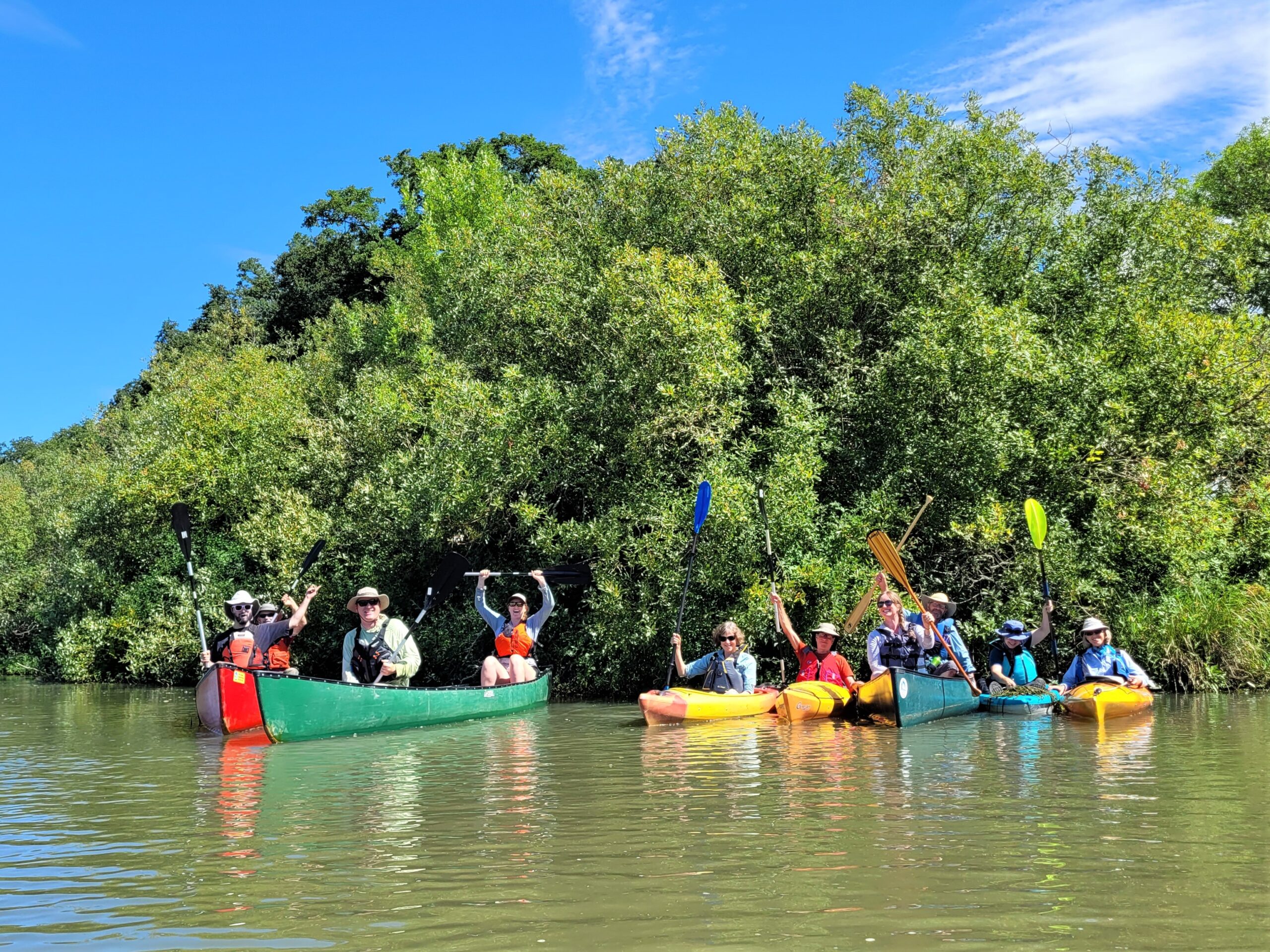When invasive ludwigia was discovered in the Long Tom system in 2014, the LTWC began working with the City of Eugene to quickly treat infestations and protect downstream habitat value. Project work to reduce ludwigia populations were initially sustained by a series of six grant from the Oregon State Weed Board and partnerships with City of Eugene, the Oregon Department of Agriculture, the Oregon Department of Transportation, the U.S. Army Corps of Engineers, the Junction City Water Control District, and private landowners.
Invasive ludwigia hexapetala (water primrose) species have an aggressive growth pattern and can form dense mats across still or slow-moving water. Problems can include:
- Interference with water intakes and other infrastructure
- Water use (decreased summer quantities)
- Issues with water conveyance
- Accelerated sedimentation
- Decreased open water habitat
- Deteriorating water quality
Ludwigia treatment each year includes work in over 25 miles of Amazon Creek, the A-2 channel tributary, and the Long Tom River.
Hard-earned progress over most of a decade has left only sparse populations in the watershed, allowing us to hit a big milestone in 2022. Reduced project costs have enabled us to move away from annual grant cycle funding to being fully supported by local partners in our ludwigia control effort, including the Junction City Water Control District, the US Army Corps of Engineers, and the City of Eugene, and local volunteers. With stable, long-term funding, we hope to be able to maintain our hard-earned successes far into the future.
A huge thank-you to Habitat Contracting, whose hard work on the project since day one has achieved such success, and to all our volunteers and partners who make this work possible!

